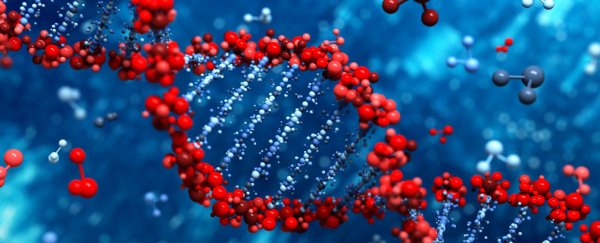With a few easy tweaks, scientists can cut-and-paste DNA inside living cells, thanks to a promising new technique that could make possible everything from testing new drugs or curing genetic diseases.
And researchers just discovered a way to make the process a whole lot cheaper and easier, according to a study published Thursday in the journal Developmental Cell.
For less than US$100, the new process allows scientists to make some of the key materials needed to modify an organism's entire genome, or its complete set of DNA, the researchers said.
The advance is based on a technique that allows scientists to narrow in on a specific gene and cut-and-paste bits of DNA to change its function, known as CRISPR-Cas9. Jennifer Doudna at UC Berkeley and her colleagues first discovered this natural process that bacteria use to protect themselves against invading viruses.
But the technique is much more powerful than that — it basically gives scientists the ability to rewrite specific chunks of an organism's genetic code, including that of humans.
Tweaking our genes
Here's how it works: When a bacterium encounters DNA from a virus, it makes a strand of RNA, a molecular cousin to DNA, that matches the sequence of the viral DNA, known as a guide RNA. The guide RNA latches onto a protein (the Cas9 part of the CRISPR-Cas9 name), and together they search for the matching virus. When they find a match, the protein, which acts like a pair of scissors, cuts up the viral DNA, destroying it.
The same process can be used to cut-and-paste DNA into virtually any type of living cell. For example, instead of using the protein scissors to cut a virus, they can be used to cut out DNA in a human cell and replace it with DNA of the scientist's choosing.
In this way, it would be possible to swap out a defective version of a gene for a healthy one.
Humans have roughly 20,000 to 25,000 genes, which encode proteins that perform vital jobs in our cells. But our genetic blueprint has a lot of other DNA whose purpose is less obvious. The successor to the human genome project, the Encyclopedia of DNA Elements (ENCODE), has identified what 80 percent of our complete set of DNA does, but the rest remains a mystery.
In the new study, the researchers developed a method that makes it easier to create the guide molecules that home in on the DNA someone wants to tweak. The researchers hilariously named the process "CRISPR-EATING", which stands for "Everything Available Turned Into New Guides".
To demonstrate the technique, the researchers converted nearly 90 percent of the DNA of the common stomach bacterium E. coli (the harmless variety, not the kind that can make you sick) into 40,000 different guide molecules. Each of these molecules can be used to target any bit of DNA a researcher might want to modify.
For example, if a scientist wants to figure out what a particular gene does, all he or she has to do is cut it out and see what happens. Thousands of these guides can be injected into different cells at once, a process known as genetic screening. These screens can reveal which forms of a gene are present, and whether any of them could lead to disease.
Monitoring a growing embryo
But the researchers who developed this technology have a different use in mind. They plan to track chromosomes, the tightly coiled packages of DNA that contain the genes, in living cells as the cells are dividing. They're hoping to find out what controls the size of the nucleus, the central compartment of a cell that contains the DNA, and other components of the cell as it develops into a many-celled organism.
"This technology will allow us to paint a whole chromosome and look at it live and really follow it … as it goes through developmental transitions, for example in an embryo," study co-author Rebecca Heald, a molecular and cell biologist at UC Berkeley, said in a statement.
This is important because it means researchers can track changes in the size and structure of chromosomes as the cells divide – and potentially detect changes that could lead to disease.
Earlier this year, Chinese scientists caused a controversy when they announced they'd used the gene editing technique to tweak the genomes of human embryos. The embryos were chosen because they weren't able to survive, but some scientists have warned about the ethics and safety of using this nascent technology in people.
One concern is the fact that the technique is still fairly innacurate, and results in a lot of accidental mutations in other parts of the genome. Of the 86 embryos the Chinese researchers attempted to modify, only 28 of them were successfully changed, and only a fraction of those contained the desired DNA. For the technique to be safe, the accuracy would have to be closer to 100%, the researchers said.
Recently, scientists developed a way to cut down on unwanted mutations by 40%, which could make the technique a lot safer for human use. But the ethical hurdles remain.
This article was originally published by Business Insider.
More from Business Insider:
